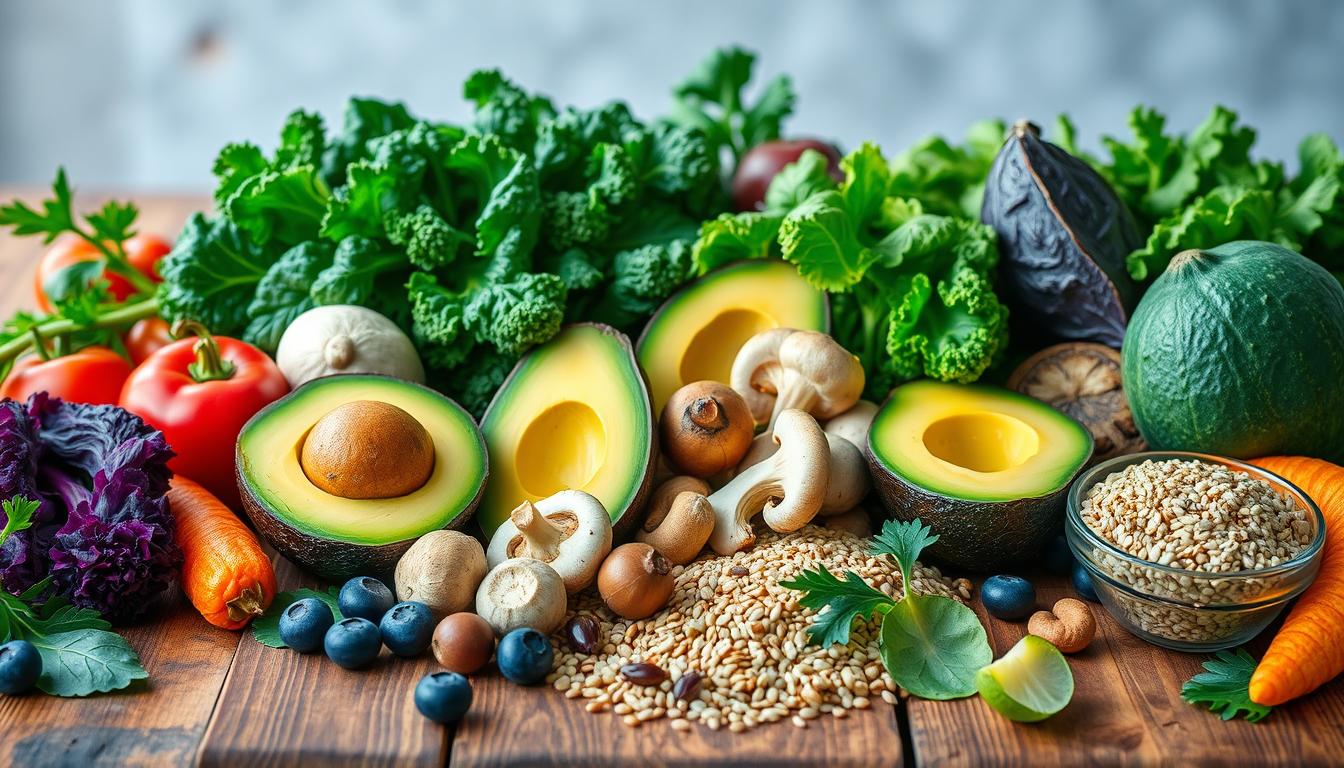Imagine waking up each morning with vibrant energy flowing through your veins, fueled by the power of nature’s nutrient-packed gifts. Isn’t it fascinating to think that your plate can be a canvas for health and vitality? Incorporating superfoods, those tiny yet mighty heroes of nutrition, into your diet can be the key to transforming your overall well-being. These extraordinary foods are not just a trend; they are a way to nurture your body and mind, offering a rich source of antioxidants, vitamins, and minerals essential for a healthier lifestyle. Embracing superfoods for health might be the simplest strategy you can adopt, allowing you to thrive in harmony with nature’s bounty. By choosing to nourish yourself with nature’s best, you’re taking a powerful step toward a healthier and more vibrant you.
Key Takeaways
- Incorporating superfoods can enhance your nutrition and overall well-being.
- Superfoods are defined by their high nutritional density and minimal calories.
- Regular consumption of these foods may help combat chronic health issues.
- Fruits, vegetables, nuts, and grains are excellent sources of essential nutrients.
- Choosing whole foods over supplements ensures maximum benefits and minimal risks.
- Small, consistent changes in your diet can lead to significant health improvements.
What are Superfoods?
Superfoods play a vital role in modern nutrition, capturing attention due to their remarkable health benefits. A clear definition of superfoods refers to foods exceptionally high in nutrients, including vitamins, minerals, antioxidants, and fiber. Their rich composition often comes from plant-based sources, making them fundamental to a balanced diet.
Definition and Characteristics
The characteristics of superfoods include a high concentration of nutrients that support overall health. Many superfoods are recognized for their health-enhancing properties, which can lead to improved immunity, reduced inflammation, and better heart health. Foods like dark green leafy vegetables, berries, and nuts are prime examples of this category. They are often packed with antioxidants and essential vitamins that offer significant health advantages.
Market Terminology and Nutritional Value
In the food market, the term “superfood” is frequently used to highlight products that boast exceptional nutritional value. Foods labeled as superfoods usually provide various health benefits, attributed to their nutrient density. For instance, berries are lauded for their antioxidant properties, while legumes and whole grains contribute to improved dietary fiber and protein intake. Different food options deliver diverse nutrients, making it essential to include a variety of superfoods in your daily meals.
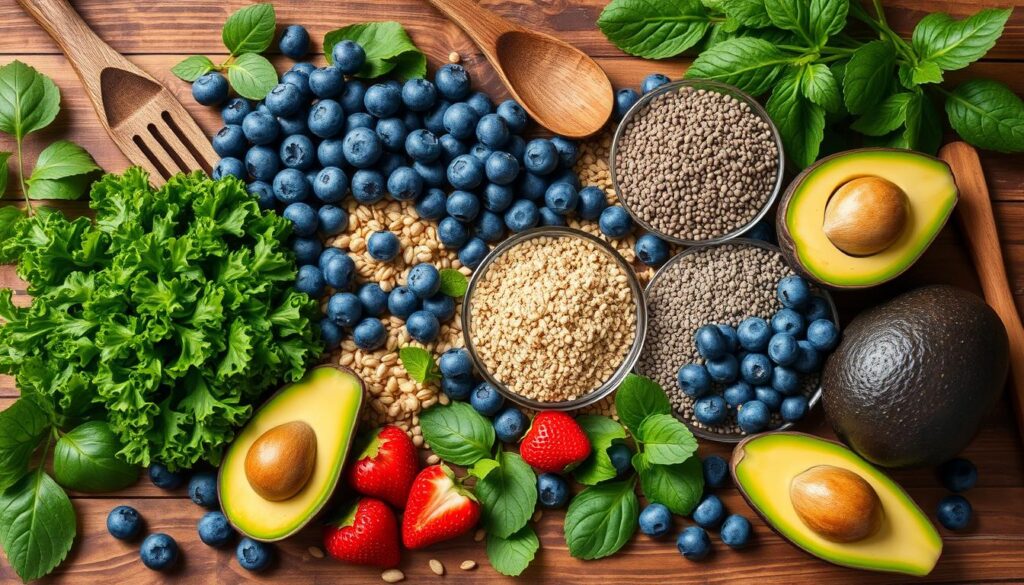
Benefits of Superfoods
Integrating superfoods into your diet brings remarkable advantages due to their high concentrations of essential nutrients and vibrant antioxidant properties. These nutrient-dense foods not only bolster overall health but also support various bodily functions that may prevent chronic diseases. By incorporating a variety of superfoods into your meals, you can significantly enhance your wellness trajectory.
Rich in Nutrients and Antioxidants
Superfoods are often packed with vitamins, minerals, and antioxidants that provide a plethora of health benefits. For instance, dark leafy greens, such as kale and spinach, are famous for their vitamin K content, which plays a vital role in bone health. Consuming omega-3-rich foods like wild salmon and walnuts can promote heart health and reduce inflammation, an essential factor for preventing chronic diseases.
Many superfoods, such as blueberries and dark chocolate, are celebrated for their strong antioxidant properties. Blueberries contain bioflavonoids linked to anticancer potential, while dark chocolate offers powerful antioxidants that may boost mood and cognitive function. By choosing these nutrient-dense foods, you enrich your diet with vital substances needed for optimal health.
Potential Health Benefits for Chronic Disease Prevention
The benefits of superfoods extend to chronic disease prevention. Regular consumption of citrus fruits provides a substantial boost of vitamin C, strengthening the immune system. Tomatos, rich in lycopene, may lower the risk of prostate cancer. Research indicates that women who eat strawberries and blueberries frequently possess a significantly lower heart attack risk.
Incorporating nuts into your daily routine can aid in inflammation reduction and improve heart health. Cold-water fish, such as herring and sardines, coupled with flaxseeds, offer plant-derived omega-3 fatty acids, which play a crucial role in lowering heart disease risk. The versatility of these superfoods allows you to easily blend them into your meals, maximizing your nutrient intake.

| Superfood | Nutritional Benefit | Research Insight |
|---|---|---|
| Blueberries | Antioxidant properties | Linked to cancer prevention |
| Dark Chocolate | Rich in antioxidants | May improve mood |
| Wild Salmon | High in omega-3 fatty acids | Reduces heart disease risk |
| Walnuts | Plant-based omega-3s | Improves artery health |
| Citrus Fruits | High in vitamin C | Boosts immune function |
| Dark Leafy Greens | Rich in vitamin K | Supports bone health |
Top Superfoods to Add to Your Diet
Incorporating the right superfoods into your daily meals can significantly enhance your overall health. Here are some top superfoods to add that can provide essential nutrients and health benefits to your diet.
Dark Leafy Greens
Dark leafy greens, such as kale, spinach, and Swiss chard, are among the top superfoods to add. They are loaded with vitamins A, C, and K, along with minerals like calcium and iron. These greens play a vital role in reducing inflammation and improving overall heart health.
Berries
When considering nutritional powerhouses, berries like blueberries, strawberries, and raspberries are hard to ignore. The health benefits of berries stem from their high antioxidant content, which helps combat oxidative stress. Regular consumption can aid in boosting brain health and lowering the risk of chronic diseases.
Quinoa and Legumes
Another excellent choice includes quinoa and legumes such as lentils and chickpeas. They are rich in protein, fiber, and a wide range of vitamins and minerals. Including these in your meals can ensure balanced energy levels and satiety throughout the day.
Healthy Fats from Avocados and Nuts
Avocados and nuts are essential sources of healthy fats, particularly omega-3 fatty acids. They can improve cholesterol levels and support heart health. Adding these foods not only enhances flavor but also provides crucial nutrients that contribute to your overall well-being.
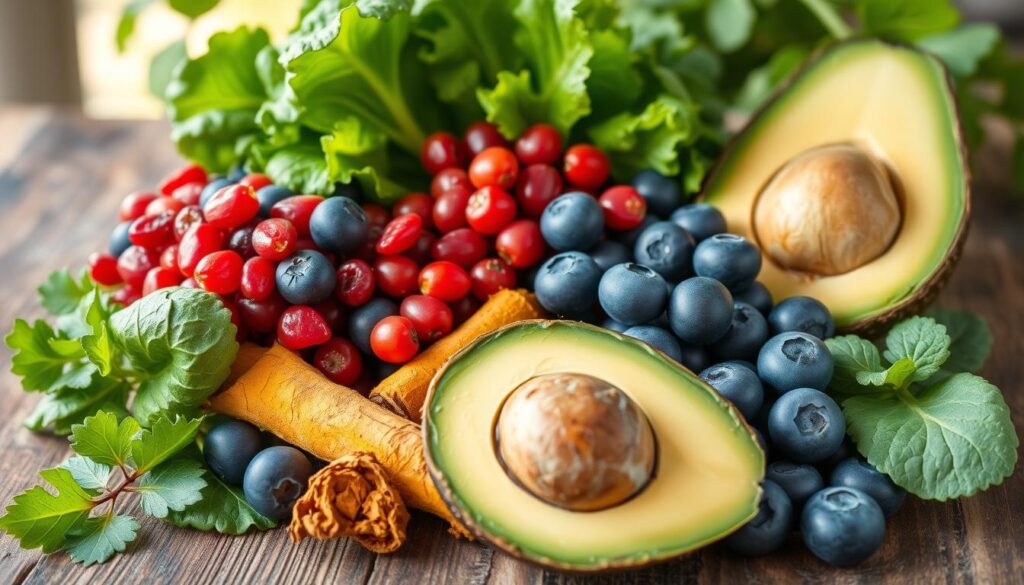
How to Include Superfoods in Your Meals
Incorporating superfoods into your meals can enhance both flavor and nutrition. You don’t need complicated recipes to enjoy their benefits. Explore simple ways to include these nutrient-dense foods in your daily routine, making every meal an opportunity for wellness.
Simple and Delicious Ways to Incorporate Superfoods
Getting started with superfoods involves practical and enjoyable meal ideas. Here are some easy suggestions:
- Smoothies: Blend spinach or kale with bananas and berries for a quick breakfast that’s rich in vitamins.
- Salads: Top mixed greens with quinoa, avocado, and a sprinkle of seeds to create a nourishing lunch.
- Snacks: Enjoy a handful of nuts or yogurt with chia seeds for an energizing mid-afternoon treat.
- Dinners: Incorporate colorful roasted vegetables alongside superfood sides like sweet potatoes or legumes.
Using Superfoods in Breakfast, Lunch, and Dinner
How to include superfoods as part of your daily meals can be quite satisfying. Here are some creative ways to do this:
| Meal | Superfood Ideas | Benefits |
|---|---|---|
| Breakfast | Smoothie with spinach, berries, and yogurt | Boosts energy and immunity |
| Lunch | Quinoa salad with dark leafy greens and nuts | Provides essential nutrients and healthy fats |
| Dinner | Stir-fried vegetables with garlic olive oil | Delivers antioxidants and improves heart health |
Consider these meal ideas with superfoods as a foundation for your daily planning. With a little creativity, you can transform routine meals into delightful culinary experiences packed with nutrients. From a quinoa and kale salad to a chia seed smoothie bowl, there are endless healthy meal ideas that incorporate superfoods. Whether it’s adding a handful of blueberries to your oatmeal or tossing some spinach into your omelette, superfoods can easily be incorporated into your meals to boost their nutritional value. Experimenting with different superfoods and meal combinations can make healthy eating feel like a delicious adventure.
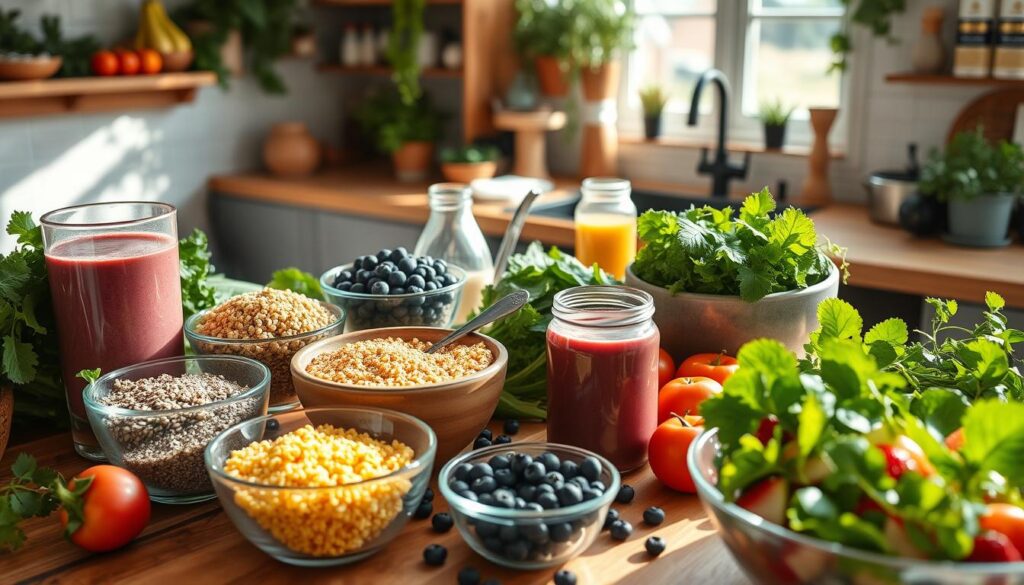
Superfoods in Recipes
Exploring the realm of superfoods in recipes opens up a world of delicious possibilities. Incorporating these nutrient-dense ingredients not only enhances flavor but also boosts the nutritional profile of your meals. From vibrant smoothie recipes to creative salad ideas with superfoods, opportunities for culinary creativity abound.
Recipes for Smoothies and Juices
Smoothies are a fantastic way to pack various superfoods into one delicious drink. A popular combination might include leafy greens like spinach, nutrient-rich berries such as blueberries or strawberries, and added textures like chia seeds. For an energizing boost, consider blending ingredients like creamy yogurt and bananas along with your favorite superfoods.
Creative Salads and Bowls Using Superfoods
Salads provide endless opportunities to explore salad ideas with superfoods. A hearty salad can mix kale with colorful foods like roasted beets, sliced avocado, and nuts such as pecans or walnuts for crunch. Alternatively, you might create a quinoa bowl topped with black beans, fresh veggies, and a light vinaigrette. These meals, while packed with flavor, often take just about 30 minutes to prepare, making them ideal for a quick yet nutritious dining experience.

Using the right spices can elevate your dishes further. Fresh ginger, garlic, and a hint of cumin add warmth and depth to any salad or smoothie. With so many superfood varieties, you can easily tailor your meals to satisfy both taste and health goals, making cooking a fun and rewarding experience.
| Recipe Type | Superfoods Used | Preparation Time |
|---|---|---|
| Smoothies | Spinach, blueberries, chia seeds | 25 minutes |
| Salads | Kale, avocado, nuts, quinoa | 30 minutes |
| Bowls | Black beans, roasted beets, veggies | 30 minutes |
Easy Ways to Incorporate Superfoods
Integrating superfoods into your diet can feel manageable and enjoyable. Keeping your meal planning wit superfoods organized makes it easier to achieve a healthy lifestyle. Here are some approaches to enhance your meals and snacks with nutrient-rich ingredients.
Planning Your Meals with Superfoods
Meal planning with superfoods allows you to innovate while balancing nutrition. Start by crafting a grocery list that includes superfood staples like:
- Berries
- Spinach and Kale
- Avocado
- Quinoa
- Sweet Potatoes
Consider scheduling time each week to plan your meals, ensuring a variety of superfoods. When preparing meals, think about:
- Adding berries to your morning oatmeal or smoothie
- Mixing spinach into soups for a nutrient boost
- Sprinkling nuts and seeds on salads for an extra crunch
- Baking nutritious treats using almond flour or coconut flour
Snack Ideas Using Superfoods
Snacking on superfoods can satisfy hunger while nourishing your body. Simple snack ideas include:
- Mixed nuts for a satisfying protein fix
- Energy balls made with dates, nuts, and cacao
- Veggie sticks paired with hummus for a crunchy delight
- Smoothies loaded with greens, fruits, and a scoop of spirulina
By experimenting with these easy ways to incorporate superfoods into your daily snacks, you can enjoy a variety of flavors while reaping significant health benefits. Remember to keep things fun and vibrant, making the most out of your superfood journey!
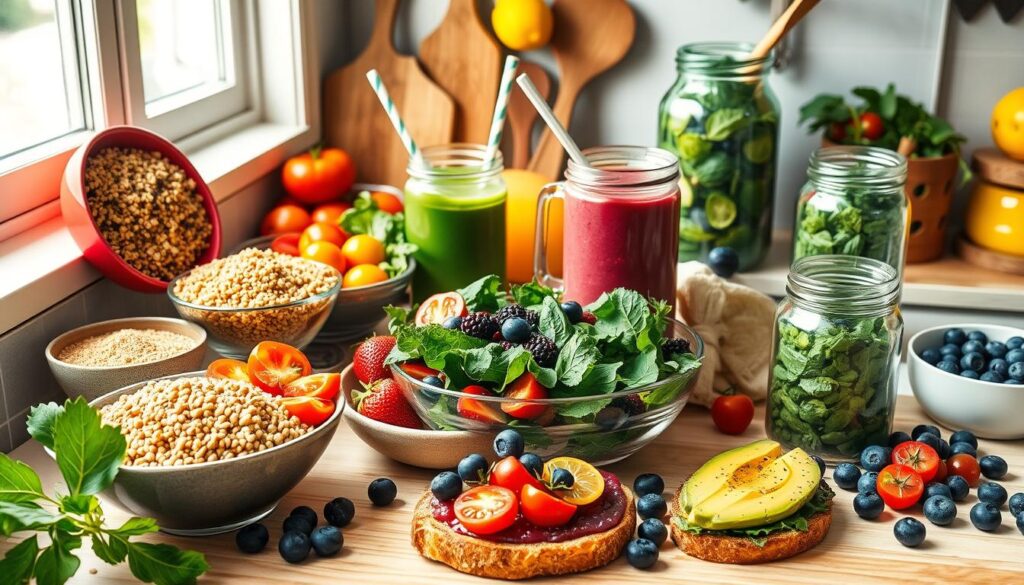
Adding Superfoods to Your Diet
Incorporating superfoods into your meals requires strategic planning, especially during grocery shopping. Focusing on fresh, whole foods enhances not only your enjoyment but also your health. By keeping some grocery shopping tips for superfoods in mind, you ensure your choices offer optimal nutritional benefits.
Tips for Grocery Shopping for Superfoods
- Prioritize seasonal produce. Items like dark leafy greens, berries, and sweet potatoes are not only nutrient-rich but also more flavorful when in season.
- Read labels carefully. Look for superfoods with minimal processing, high antioxidant content, and no artificial additives.
- Consider bulk bins for purchasing nuts, seeds, and grains. This approach often reduces costs and allows for a variety of choices.
- Don’t overlook frozen options. Frozen fruits and vegetables often retain their nutrients and can be a convenient alternative when fresh options are unavailable.
Mindful Eating and Portion Control
When adding superfoods to your diet, practice mindful eating. This includes being aware of portion sizes, especially for calorie-dense items such as nuts and avocados. Here are some practical suggestions:
- Start with smaller servings of richer superfoods. For example, a small handful of almonds or a quarter of an avocado provides health benefits without overwhelming calorie intake.
- Pair high-calorie superfoods with lighter ingredients. Adding berries to yogurt or mixing greens into a salad with plenty of vegetables can help balance your meal.
- Listen to your body’s hunger cues, which can prevent overeating even with nutrient-rich foods.
- Experiment with meal prepping to maintain consistent portion sizes and make healthy choices easier throughout the week.
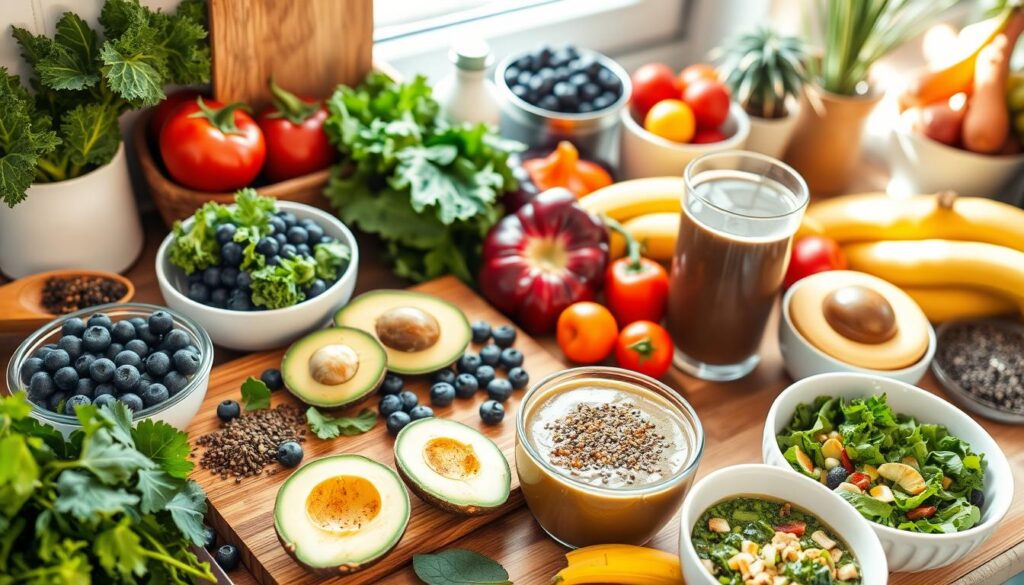
| Superfood | Nutritional Benefit | Portion Size |
|---|---|---|
| Berries | High in antioxidants | 1/2 cup daily |
| Nuts | Heart health & weight loss | 1 oz (about a handful) |
| Avocado | Heart disease prevention | 1/4 to 1/2 |
| Dark Leafy Greens | Cancer protection | 1 cup cooked |
| Sweet Potatoes | Antioxidative properties | 1 medium potato |
Superfood Nutrition Facts
When it comes to selecting the best superfoods, understanding nutritional labels plays a crucial role. By examining these labels closely, you can identify which products offer the highest nutrient density and the least number of additives. This approach ensures you make informed decisions about what you consume, particularly as superfood popularity continues to rise.
Understanding Nutritional Labels for Superfoods
To make the most of your superfood nutrition facts, take time to interpret nutritional labels effectively. Key components to consider include:
- Serving size: Understand the recommended serving to manage portion control.
- Calories: Keep an eye on calorie counts, as even healthy superfoods can be calorically dense.
- Vitamins and minerals: Look for products packed with essential nutrients like vitamins A, C, and K, especially in leafy greens like kale.
- Fiber: High fiber content is crucial, as it aids digestion and promotes a healthy gut.
- Additives: Aim for products with minimal additives to ensure you consume only the most beneficial ingredients.
The Importance of Organic and Non-GMO Options
Choosing organic superfoods brings additional benefits to your diet. Various studies highlight a steady increase in organic product consumption, reflecting a growing awareness about food quality. Selecting organic or non-GMO options can result in:
- Better nutrient retention: Organic farming practices often result in higher nutrient levels.
- Reduced chemical exposure: Minimizing harmful pesticide intake enhances your overall health.
- Environmental sustainability: Organic farming contributes positively to soil health and biodiversity.
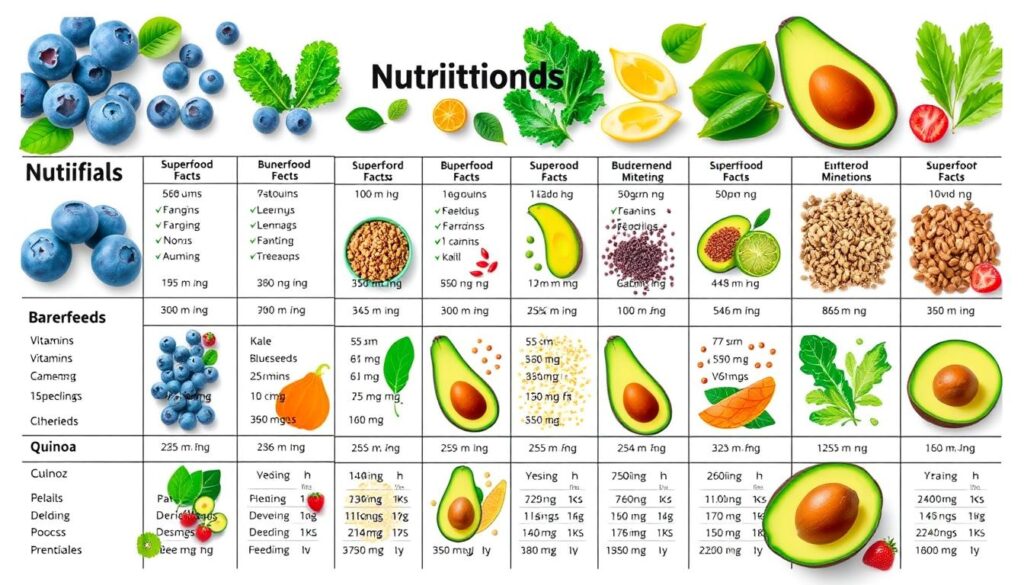
| Superfood | Nutritional Benefits | Organic Preference |
|---|---|---|
| Kale | Rich in Vitamins A, C, K, and antioxidants | Highly recommended |
| Berries | High in antioxidants and anti-inflammatory properties | Preferred organic |
| Quinoa | Complete protein with all essential amino acids | Organic options available |
| Avocado | Source of healthy fats, benefits for heart health | Strongly advised organic |
| Chia Seeds | Rich in omega-3 fatty acids, high in fiber | Organic is preferable |
Understanding superfood nutrition facts empowers you to take charge of your health. By focusing on nutritional labels and selecting organic superfoods, you can optimize your dietary choices for maximum benefits.
Conclusion
Embracing a diet rich in superfoods can vastly enhance your overall health and well-being. The benefits of incorporating superfoods like dark leafy greens, berries, and healthy fats, are not just abundant in nutrients but also crucial in lowering the risk of chronic diseases. By making simple changes in your meals, you can embark on a journey toward a healthier lifestyle with superfoods.
Integrating these nutrient-dense foods into your daily routine promotes energy, strengthens your immune system, and supports cognitive function. As you explore the various options available, remember that the path to a tastier, more vibrant diet doesn’t have to be complicated. From smoothies filled with berries to salads bursting with leafy greens, the delicious possibilities are endless.
Begin today by adding diverse superfoods to your diet and unlock the rewards of enhanced vitality and improved health. With every meal, you take a step closer to a thriving lifestyle that prioritizes your well-being through the power of superfoods.
